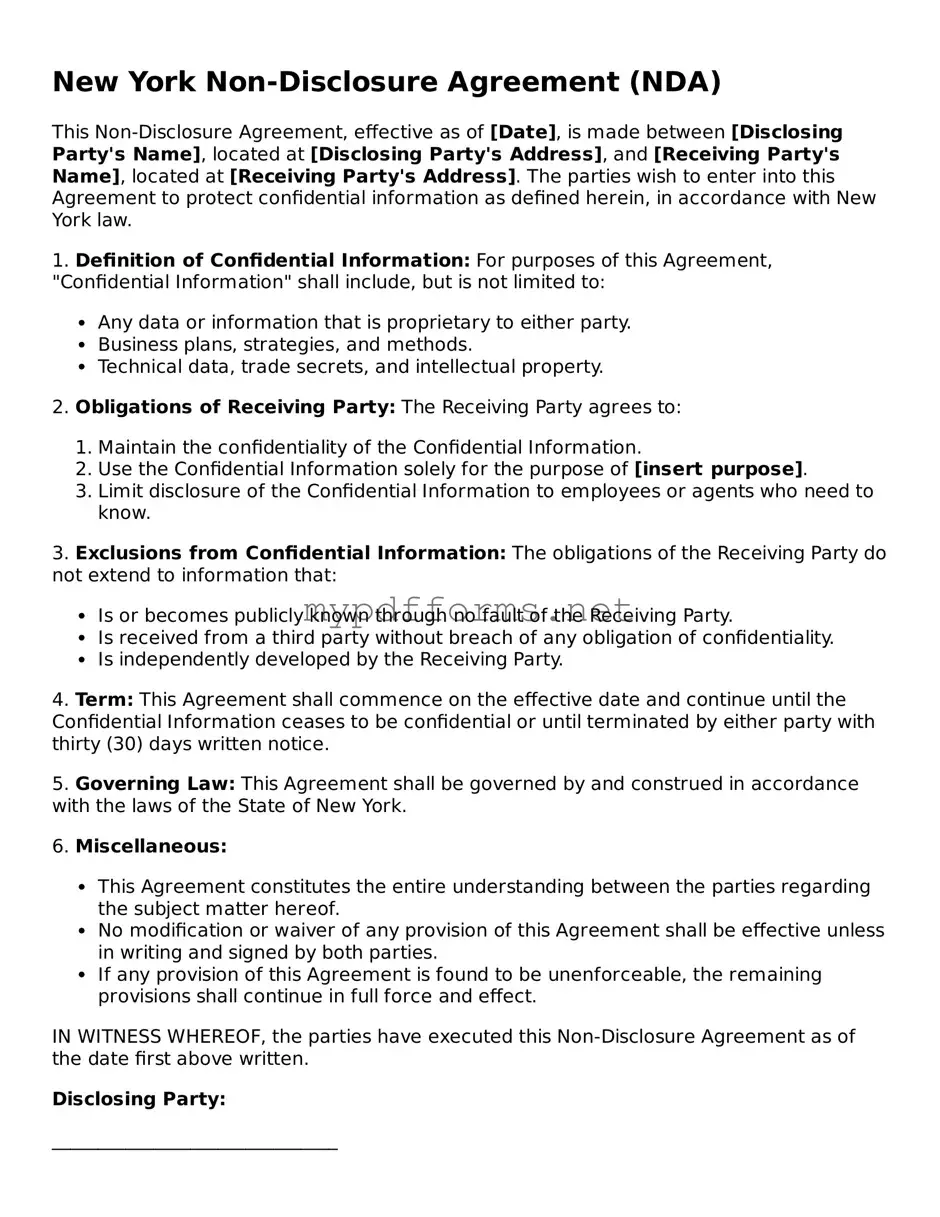A Confidentiality Agreement is similar to a Non-disclosure Agreement (NDA) in that both documents aim to protect sensitive information shared between parties. While an NDA typically focuses on preventing the disclosure of proprietary information, a Confidentiality Agreement can cover a broader range of confidential materials. This includes trade secrets, business strategies, and client lists. Both agreements establish the obligations of the parties involved and outline the consequences of unauthorized disclosure, ensuring that sensitive information remains protected.
A Non-compete Agreement also shares similarities with an NDA, though its primary focus is on restricting an individual's ability to engage in business activities that compete with a former employer. Like an NDA, a Non-compete Agreement is designed to protect business interests and confidential information. However, while an NDA centers on the sharing of information, a Non-compete Agreement prevents individuals from using that information to gain a competitive advantage in the marketplace. Both documents serve to safeguard a company's proprietary assets, albeit in different ways.
For those considering forming an LLC in Illinois, understanding various agreements, including the Illinois Forms for operating agreements, is essential. Such documents not only outline ownership and operational structures but also contribute significantly to maintaining confidentiality and protecting sensitive information, similar to the various types of non-disclosure agreements discussed.
A Mutual Non-disclosure Agreement is another document that resembles a standard NDA. This type of agreement is used when both parties intend to share confidential information with each other. Each party agrees to protect the other's sensitive information, creating a balanced approach to confidentiality. The mutual aspect ensures that both sides are held to the same standards regarding the handling of proprietary information, fostering trust and collaboration in business relationships. This agreement is particularly useful in joint ventures or partnerships where both parties have valuable insights to share.
A Proprietary Information Agreement is closely aligned with an NDA, as it also focuses on the protection of proprietary information. This document specifically addresses the ownership and usage rights of proprietary materials shared between parties. While an NDA may broadly cover any confidential information, a Proprietary Information Agreement emphasizes the ownership aspect, making it clear which party retains rights to the shared information. This distinction is crucial for businesses that want to ensure their intellectual property remains secure while collaborating with others.
